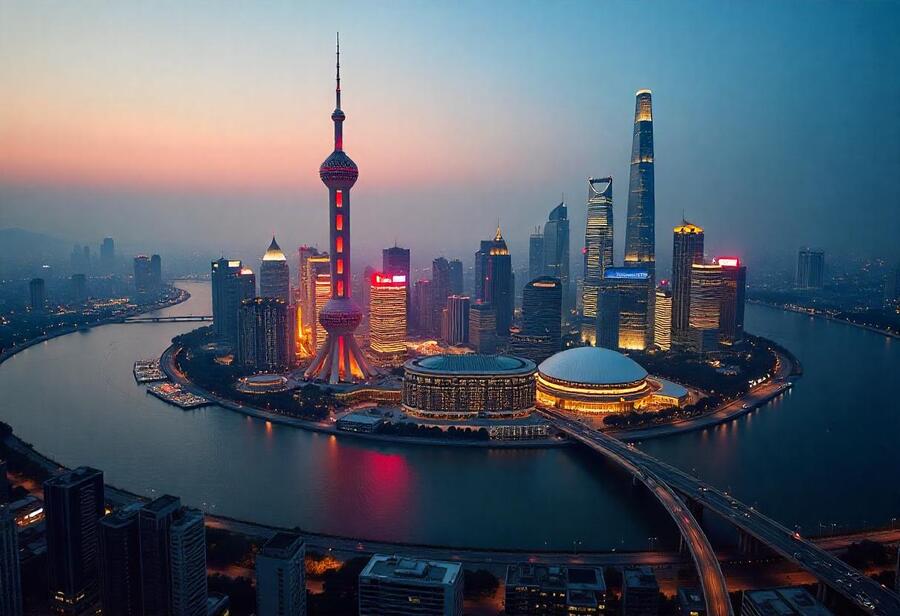Saturday, May 24, 2025
The unprecedented growth in China’s inbound tourism is being significantly driven by visitors from key countries including the US, Germany, Russia, Japan, South Korea, Thailand, the United Kingdom, Australia, France, and India. This surge is largely attributed to China’s strategic expansion of visa-free access and extended transit policies, which have removed traditional barriers and made travel more accessible and convenient for millions of international tourists. Alongside these policy reforms, substantial investments in superior travel infrastructure—from enhanced transportation networks to seamless digital payment systems—have elevated the visitor experience, encouraging longer stays and increased spending. Together, these factors have fueled a powerful boost in tourism arrivals and spending, positioning China as a premier global travel destination and delivering significant economic gains that reinforce its growing appeal worldwide.
In 2024, China welcomed an estimated one hundred thirty-two million inbound tourists, generating total tourism revenues of ninety-four point two billion U.S. dollars. These figures represent a strong recovery from the pandemic-induced downturn, reaching approximately ninety-seven percent of the visitor numbers recorded in 2019 and over ninety-three percent of pre-pandemic spending levels. The momentum continued into 2025, with the first quarter alone registering more than thirty-five million inbound visits — a nineteen point six percent increase compared to the same period in 2024.
One of the most striking aspects of this rebound has been the dramatic rise in tourism-related expenditure. Data from mobile payment platforms reveals that during the early May holiday period, spending by foreign visitors surged by one hundred eighty percent compared to the same holiday window last year. This substantial increase underscores the growing economic impact of inbound tourism, benefiting a broad range of sectors including retail, dining, hospitality, and entertainment within China’s major cities and cultural hotspots.
Central to this growth are strategic visa policy adjustments designed to simplify entry procedures and encourage more international travelers. China has expanded its visa exemption program to include nationals from thirty-eight countries, allowing them to enter without a visa. Additionally, the visa-free transit period has been extended to two hundred forty hours for travelers from fifty-four countries, enabling longer and more flexible stays. During the recent May Day holiday, nearly three hundred eighty thousand travelers utilized these visa-free and extended transit arrangements — representing a seventy-two point seven percent increase year-over-year.
Beyond policy reforms, significant investments in infrastructure and services have enhanced the overall visitor experience. Upgrades in transportation networks have improved connectivity between key cities and tourist attractions, reducing travel times and making it easier for visitors to explore multiple destinations. The widespread adoption of mobile payment technologies, familiar to domestic users, has also facilitated seamless transactions for international tourists, removing barriers to shopping and dining. Furthermore, the introduction of instant tax refund services at departure points has added an attractive incentive for visitors to make purchases during their stay, boosting retail sales.
The combination of favorable policies and improved services has resulted in higher visitor satisfaction, which in turn is expected to further fuel growth in China’s inbound tourism consumption. As more international travelers share positive experiences and return for subsequent visits, industries such as retail, hospitality, entertainment, and cultural tourism are poised to see significant gains. This dynamic supports tourism’s increasingly important role in contributing to China’s broader economic development.
China’s strong rebound in inbound tourism also reflects a renewed global confidence in cross-border travel. The country’s efforts to create a welcoming, efficient, and visitor-friendly environment are resonating with travelers worldwide. This positive trajectory suggests that inbound tourism will continue to expand steadily in the coming years, becoming a vital pillar of China’s economic recovery and growth strategy.
Visitors from the US, Germany, Russia, Japan, South Korea, Thailand, the UK, Australia, France, and India are fueling China’s record tourism growth through expanded visa-free access and upgraded travel infrastructure, driving higher arrivals, spending, and global appeal. These strategic improvements have made travel easier and more enjoyable, boosting China’s position as a top international destination.
In conclusion, China’s inbound tourism sector is charting an impressive comeback, underpinned by thoughtful policy reforms, infrastructure enhancements, and a focus on elevating the tourist experience. With increasing arrivals and spending driving economic benefits across multiple sectors, tourism is set to remain a powerful engine of growth, cultural exchange, and international connectivity for China well into the future.



